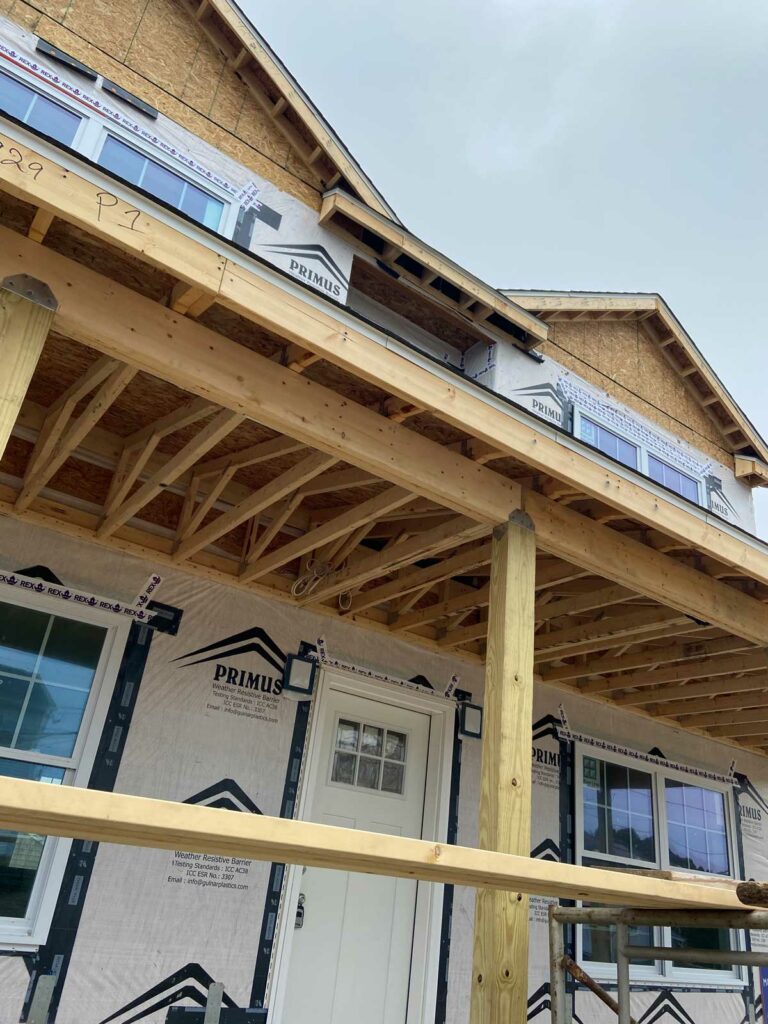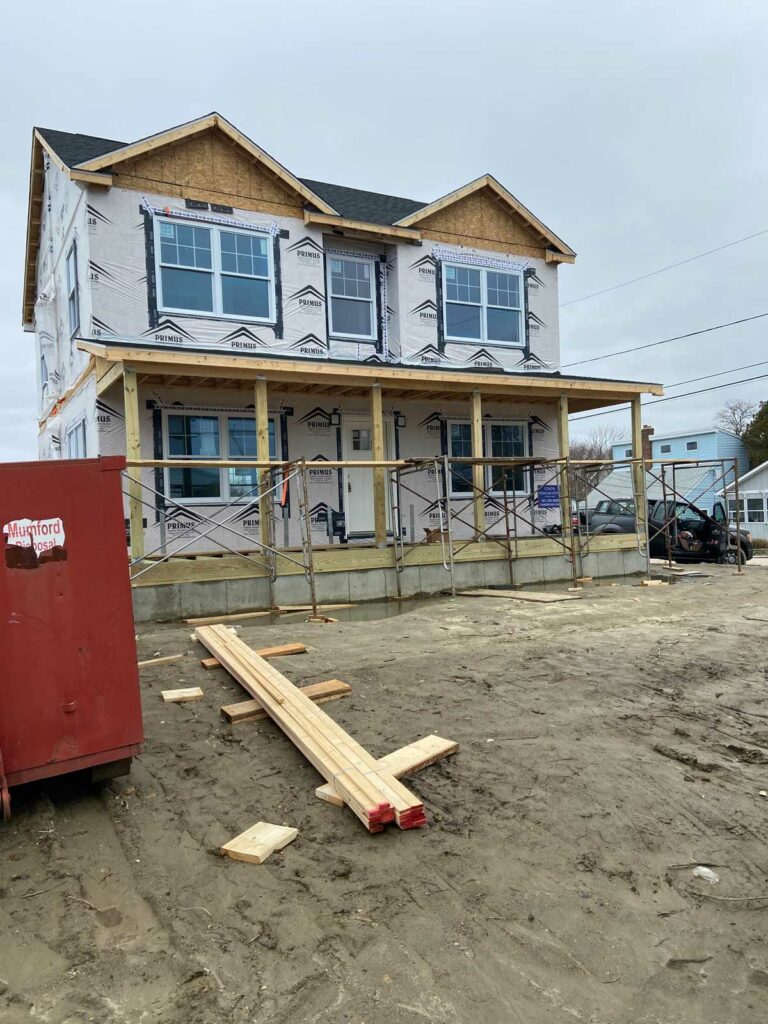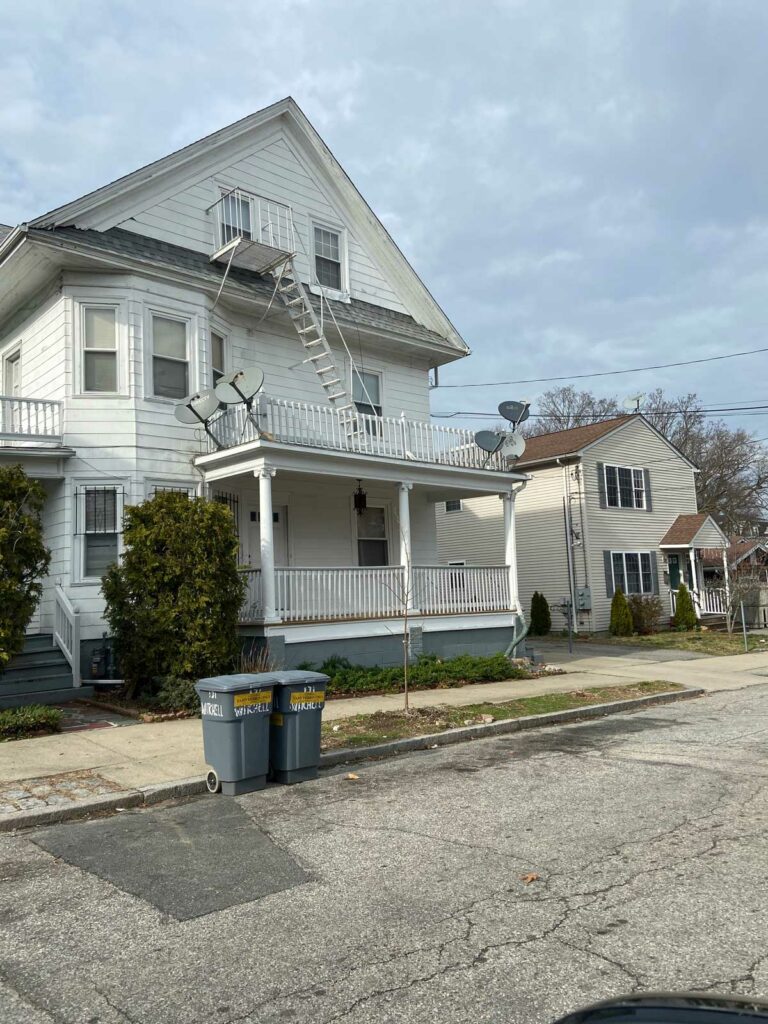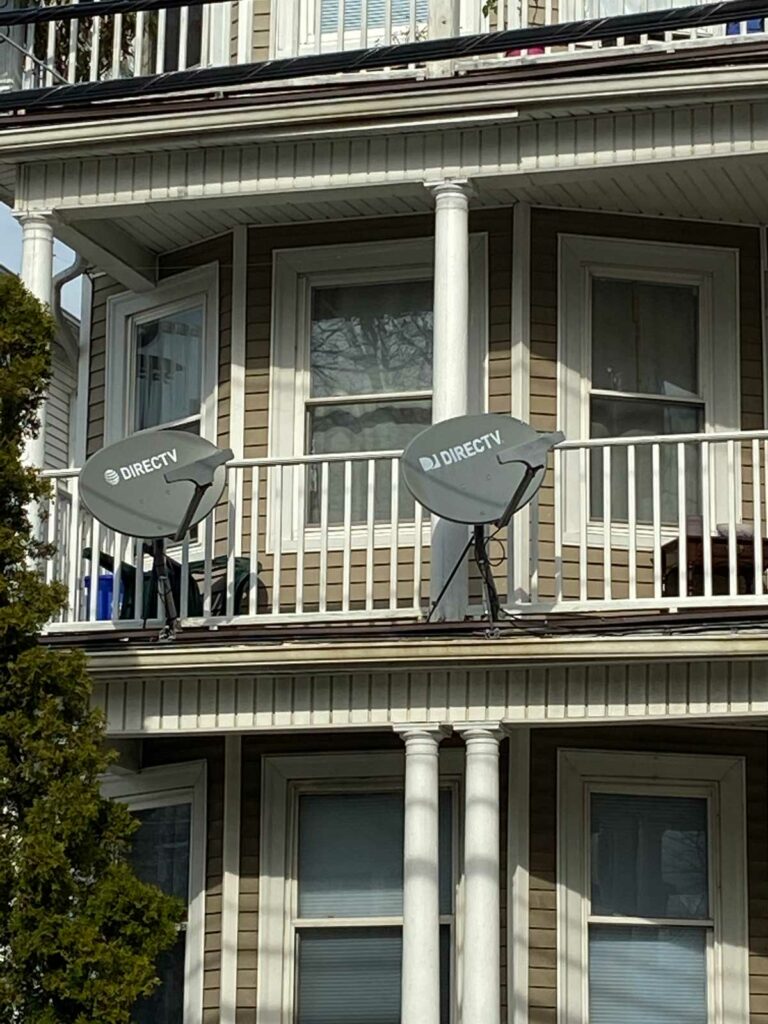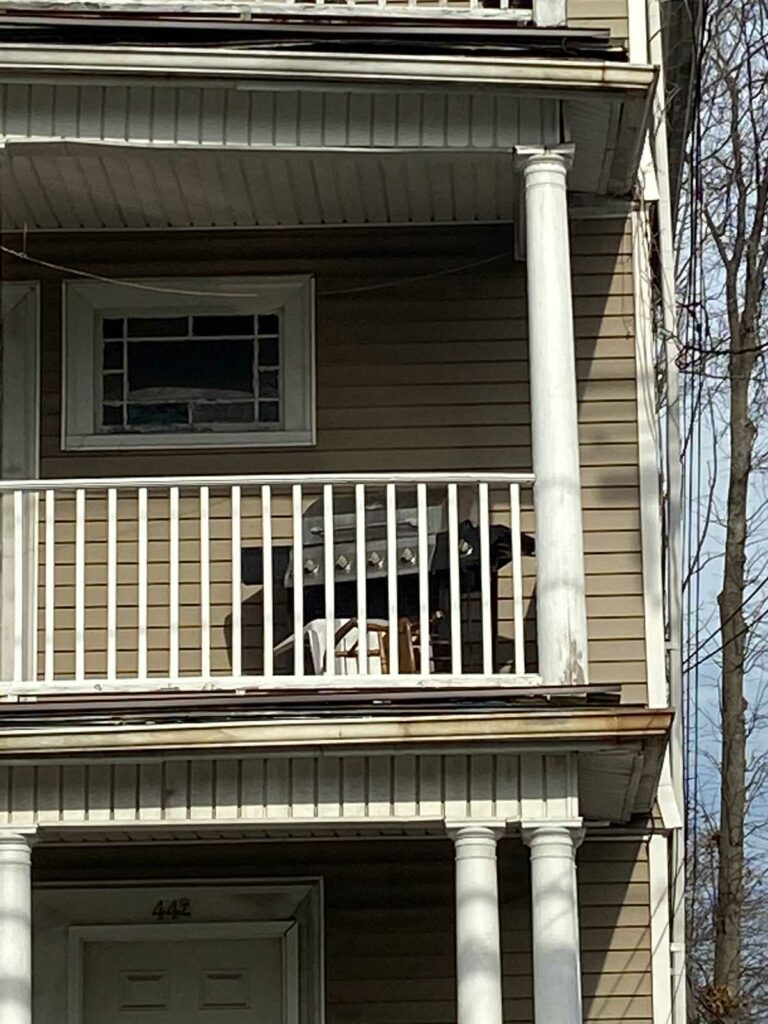
Throughout my career, one of the most spectacular fires I encountered was fire on the front porches of residential buildings. Nothing would make you feel more spirited about an aggressive fire attack than rounding a corner in your truck, looking down the street, and seeing the front of a building free burning. Front porches provide plenty of fuel and oxygen, generating sufficient heat to support a rapidly advancing and spectacular fire.
The city where I served is made up of many older neighborhoods where balloon-frame wooden structures are very common. A common feature of these older structures is front porches on all three levels. The first- and second-floor porches featured a roof, while the third-floor porch was open to the air in some cases. Another common feature in many cities are porches in the rear of a structure. This building feature presents even more challenges to firefighters because of the likely access problems that rear porches present. Most of these structures were built in the late 1800s and early 1900s. Some of the buildings were well maintained, but sadly many were in various states of disrepair. In any event, when a fire started on the outside of these buildings, it did not take long for a rapidly advancing fire to develop.
RELATED FIREFIGHTER TRAINING
Outside-In Fires: Effective Response
The Deck Gun: The Forgotten Option, Part 1 | Part 2
Andy Fredericks: The 2 1/2i-inch Handline
Porches are still a design feature on many buildings built today. New residential construction can include porches across the front of a building on the first floor. Often when buildings are renovated a front porch will be added to the existing structure. These newer buildings present some of the same features that can create a rapidly expanding fire as found in older buildings.
The causes of these fires were most often traced back to improper disposal of smoking materials, poor placement of barbeque grills, errant fireworks, portable fire pits, extension from auto fires in adjacent driveways, and in some cases as an act of revenge. Porch fires can advance so rapidly that in some cases the occupants of the building are unaware of the significant fire occurring just outside their front door. Personal behaviors and lack of good judgment seem to be common factors in the cause of these fires.
There are many hazards that firefighters should be aware of when responding to porch fires. Obviously, the first priority in any fire is the life hazard. The occupants of a structure with an involved porch fire may not be aware that there is a fire engulfing the front of their building and must be removed via rear or side entrances or via ladders. Search and rescue operations, while simultaneously conducting fire suppression operations, will require extensive personnel. Another hazard that must be evaluated is the presence of a propane barbeque grill and extra propane tanks on the porch. The presence of propane will turn an already fast-moving fire into a gas-fed fire with the potential for an explosion. Porches are often used as a storage area for bicycles, unwanted furniture/bedding, building materials, children’s toys, exercise equipment and potted plantings. All these things will complicate access to the porch from either the inside of the building or from the outside of the building. The presence of vinyl siding or, in older buildings, asphalt siding, will cause high heat and thick black smoke along with rapid fire spread. Many residential buildings have two or more TV dish antennas attached to the railings of porches. These TV dish antennas along with their associated wiring will make access difficult and will block master streams from penetrating into the building.
Another consideration in tightly packed urban areas is wind. A free-burning fire on the outside of a building will easily spread to neighboring buildings very quickly during windy conditions. The fire spread during windy days will be magnified if the neighboring buildings have vinyl siding or if the wood exterior is old and dried out. Multiple alarms will be required as the fire escalates. The result may be the total loss of two of more buildings. Overhead wires and service drops exposed to heavy fire conditions can cause live wires to fall to the ground or on fire apparatus operating at the scene. First-arriving fire companies should pay close attention to overhead wires and position their apparatus so that electrical wires are not above their trucks. Incident commanders should request the local electric power company to respond to terminate electricity as early as possible.
When confronting a rapidly advancing porch fire, firefighters must always consider the life hazard first. A quick size-up should indicate if the building is an occupied structure or an abandoned building. In either case, the best way to address the potential life hazard is through an aggressive attack on the fire with either a deck gun or 2½-inch handline. Knocking down as much of the fire as possible will buy time for later-arriving fire companies to enter the building with handlines and conduct a search of the building. When I was a young firefighter, my captain would always say: “Put the fire out and all your other problems go away; don’t overthink it”. Applying the apparatus tank water at the fire consuming the outside of the building will be the best place to start in addressing the three incident priorities: life safety, incident stabilization, and property conservation. Extinguishing the fire or reducing the fire spread can go a long way in meeting the first two incident priorities at the same time. This operational tactic, once termed a “quick knockdown,” is now referred to as a transitional attack.
Once the fire attack with the deck gun has started, establishing a water supply to the first-arriving fire company will need to be accomplished as soon as possible. Flowing a deck gun or 2-½ inch hand line from the tank water carried on the first engine company will only last two to three minutes depending on the tank size of the engine company.
Keep in mind that an engine company with a 500-gallon tank flowing an 1-1/8 inch tip at 50 psi nozzle pressure will flow approximately 250 gallons per minute. This allows only two minutes of water flowing on the fire before the tank water is exhausted and a supply line is required.
Flowing a deck gun on a fully involved porch fire for two minutes will not extinguish the fire but it will knock down a good deal of the fire while a water supply is established, hand lines are stretched, and primary searches are started. If the fire is well advanced or extending to neighboring buildings, multiple master streams and elevated master streams will need to be set up, which will require additional time and a supplemental water supply.
When encountering a large volume of fire involving front porches, fire extension can be expected. In the summer months, open windows and doors make for very fast fire extension into the building, threatening occupants. Older buildings with small voids in the outside walls and porch ceilings are common and will allow the fire into the partitions and extend into the attic areas. In newer buildings built with lightweight construction, soffit vents will allow fire extension into the attic, quickly impacting the roof trusses. If smoke is seen pushing out of ridge vents, soffit vents, gable vents, or eaves, you can expect that the fire has already extended into the attic area and is burning unchecked.
Early exposure protection is another consideration for a well-involved porch fire. The radiant heat generated from a free-burning porch fire can quickly cause the fire to extend to neighboring buildings. This is especially critical on windy days where buildings are in close proximity to each other. The material used for the exterior siding will accelerate fire spread as well. Vinyl siding commonly used in new building construction, asphalt siding commonly found in older construction (residential and commercial), and older dried out wood clapboard and shake wood shingles will ignite quickly as radiant heat penetrates these surfaces. Radiant heat will also pass through glass windows, quickly igniting window curtains, wood window frames, and furniture inside the neighboring building. Thought must be given to directing the initial hose streams onto neighboring buildings to limit the fire to the building of origin. Additional fire companies will be required to look for fire extension into exposure buildings.
Response times, personnel availability, and water supply all play a large role in determining the outcome of porch fires in any community. The key to successfully extinguishing a fully involved, multi-story porch fire is dependent on these three critical factors.
How quickly an engine company can respond to the scene and begin the size-up and initial operations are the first and essential steps. Quick response times are not only important for the first-arriving fire company but equally important for all succeeding fire companies as well. Getting enough fire companies to the scene in a quick fashion is vital to the success of porch fire operations.
Porch fires are personnel intensive, requiring quick action on multiple fronts at the same time. There are many tasks that must be accomplished, all of which require physical action on the part of the firefighters. Deploying handlines, stretching supply lines, search/rescue operations, laddering the building and establishing an incident command structure are all important components of every fireground operation and all require personnel to accomplish.
Lastly and most importantly is the component of establishing a reliable water supply. Porch fires will require large fire flows and can quickly outpace initial supply lines. The first-arriving fire companies must anticipate the water requirements of the porch fire early and call additional resources as early as possible. As the fire conditions escalate, additional supply lines will be required from further away and from different water mains. In communities where hydrants are few and water mains are small, a porch fire can quickly involve several buildings.
In all communities, it is important for the first-arriving fire company officer to know what resources are available in terms of apparatus, water supply, and personnel and make operational decisions based on these available resources and capabilities. In many cases a quick knockdown (transitional attack) using a master stream is the best place to start.
 Thomas N. Warren has more than 40 years of experience in the fire service in both career and volunteer departments. He retired as assistant chief of department of the Providence (RI) Fire Department after 33 years of service. He is a faculty member at Bristol Community College in the Fire Science Technology Program teaching a variety of subjects in the fire science discipline. He has a bachelor’s degree in fire science from Providence College, an associate degree in business administration from the Community College of Rhode Island, and a Certificate in Occupational Safety and Health from Roger Williams University.
Thomas N. Warren has more than 40 years of experience in the fire service in both career and volunteer departments. He retired as assistant chief of department of the Providence (RI) Fire Department after 33 years of service. He is a faculty member at Bristol Community College in the Fire Science Technology Program teaching a variety of subjects in the fire science discipline. He has a bachelor’s degree in fire science from Providence College, an associate degree in business administration from the Community College of Rhode Island, and a Certificate in Occupational Safety and Health from Roger Williams University.
MORE THOMAS N. WARREN
Early Fireground Decisions Determine Operational Success
The Importance of the On-Scene Radio Report
Civilians Ask Firefighters: Why Do You Do That?
